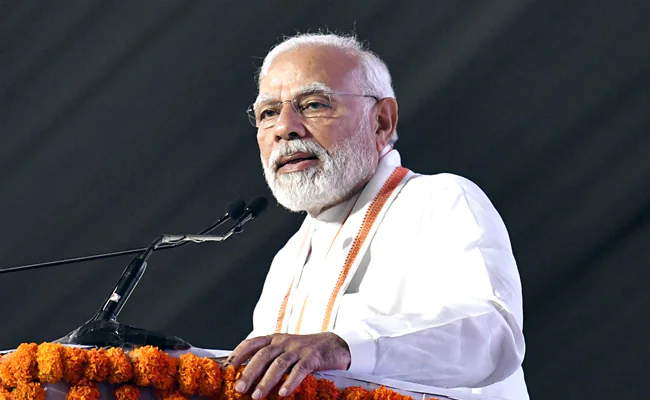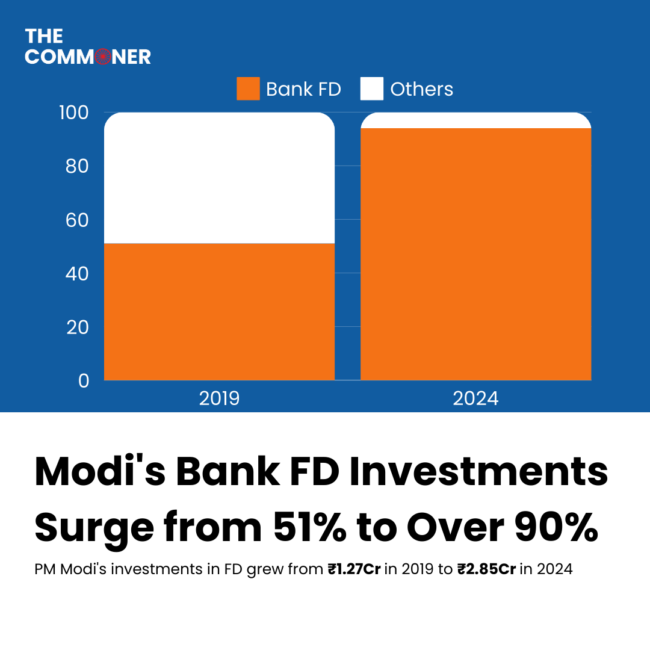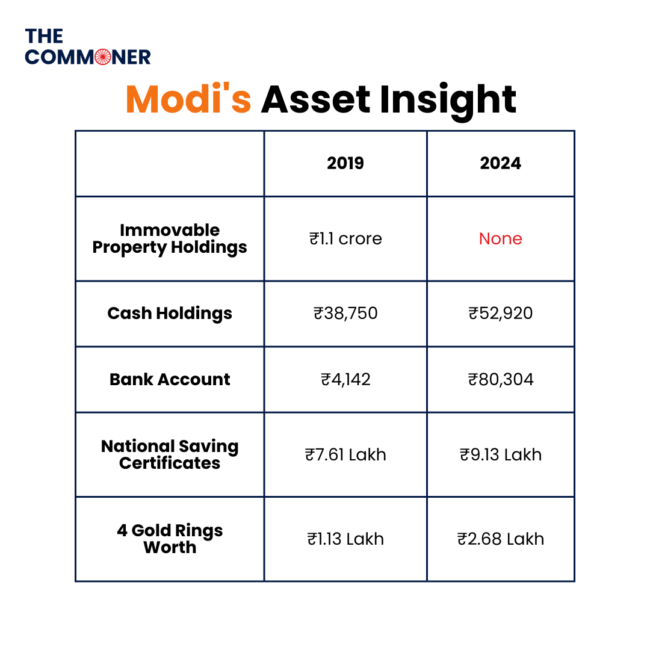PM Modi’s Financial Acumen: Safeguarding Stability & Fostering Growth

India’s Prime Minister Narendra Modi in Varanasi, India May 14, 2024.
Source: Reuters/Adnan Abidi
As India’s Prime Minister Narendra Modi filed his nomination from the Varanasi Lok Sabha constituency in Uttar Pradesh, his 2024 election affidavit has sparked significant interest. The document reveals a fascinating transformation in his financial portfolio over the past five years. This deep dive into PM Modi’s wealth highlights his strategic financial maneuvers and reflects a narrative of calculated growth and prudent asset management.
Transformation in Financial Portfolio
In 2019, Modi’s declared assets presented a picture of modesty and stability. His investments in immovable property were a significant part of his wealth. Fast forward to 2024, and the landscape of his financial portfolio has undergone a substantial transformation. The numbers have changed, but the story they tell is one of strategic financial planning and asset reallocation.

The most notable change in PM Modi’s financial portfolio is the dramatic increase in his investments in bank fixed deposits. In 2019, fixed deposits comprised 51% of his total wealth. By 2024, this figure surged to over 90%, indicating a strategic shift towards more liquid and secure assets. This move suggests a preference for safer investment avenues, reflecting a cautious approach to wealth management in the volatile economic environment.
Commitment to Long-Term Financial Instruments

Interestingly, Modi’s investment in LIC policies also saw a significant increase. From ₹1.5 crore in 2019, his investments in these policies grew to ₹1.96 crore in 2024. This growth underscores his commitment to secure, long-term financial instruments, ensuring a stable and predictable return on investment.
Another striking revelation from Modi’s 2024 affidavit is the complete divestment from immovable property. In 2019, his assets included immovable property valued at ₹1.1 crore. However, by 2024, he declared no ownership of immovable property. This shift away from real estate could be interpreted as a strategic move to increase liquidity and reduce the risks associated with property ownership.
Modi’s cash holdings and bank account balances have also seen changes. His cash holdings increased from ₹38,750 in 2019 to ₹52,920 in 2024. Similarly, his bank account balance grew from ₹4,142 to ₹80,304 over the same period. While these amounts may seem modest compared to his overall wealth, they indicate a meticulous approach to maintaining liquid cash for immediate expenses and contingencies.
Investment in Government-backed Schemes
The Prime Minister’s investment in National Savings Certificates (NSCs) also grew from ₹7.61 lakh in 2019 to ₹9.13 lakh in 2024. This increment points towards a consistent strategy of investing in government-backed savings schemes, which offer security and reasonable returns.
Moreover, PM Modi’s possession of gold rings saw a notable increase in their assessed value. In 2019, his four gold rings were valued at ₹1.13 lakh. By 2024, their value had more than doubled to ₹2.68 lakh. This rise could be attributed to the increase in gold prices over the years, further enhancing the overall value of his assets.
Conclusion
The transformation of PM Modi’s financial portfolio over the past five years is a testament to his strategic foresight and cautious approach to wealth management. As he continues to lead the nation, his personal financial journey offers a glimpse into the calculated decisions that have ensured the growth and security of his assets.
As the Prime Minister faces the 2024 elections, this detailed insight into his financial management provides a broader perspective on his personal approach to risk, investment, and economic stability. The evolution of his wealth from 2019 to 2024 is not just a story of numbers, but a narrative of strategic planning and prudent decision-making, reflecting his broader vision for the nation’s financial health and stability.
PM Modi’s financial journey over the past five years illustrates a remarkable shift from traditional investments to a more liquid and secure asset portfolio. His strategic divestment from immovable property and significant increase in fixed deposits and insurance policies underscore a calculated approach to financial growth. As India watches closely, Modi’s financial acumen continues to unfold, painting a picture of a leader who is as meticulous in managing his personal wealth as he is in steering the country towards economic prosperity.

